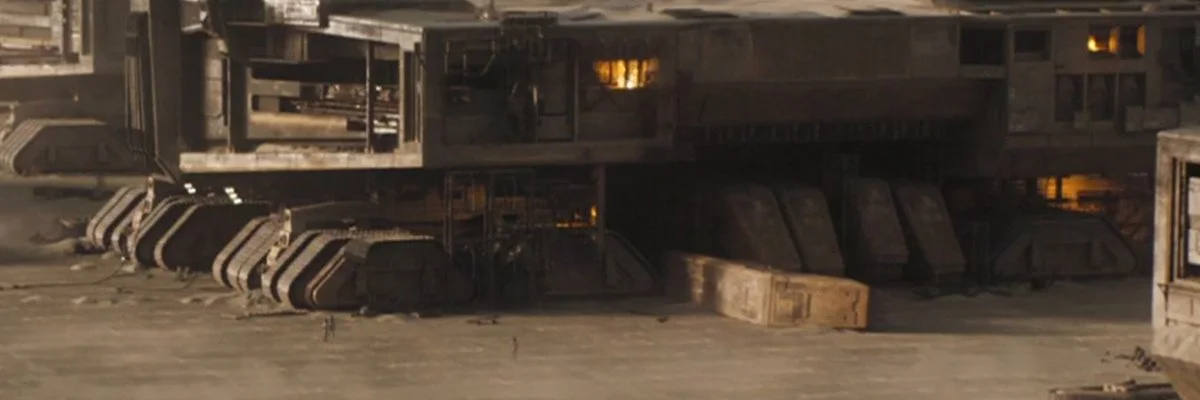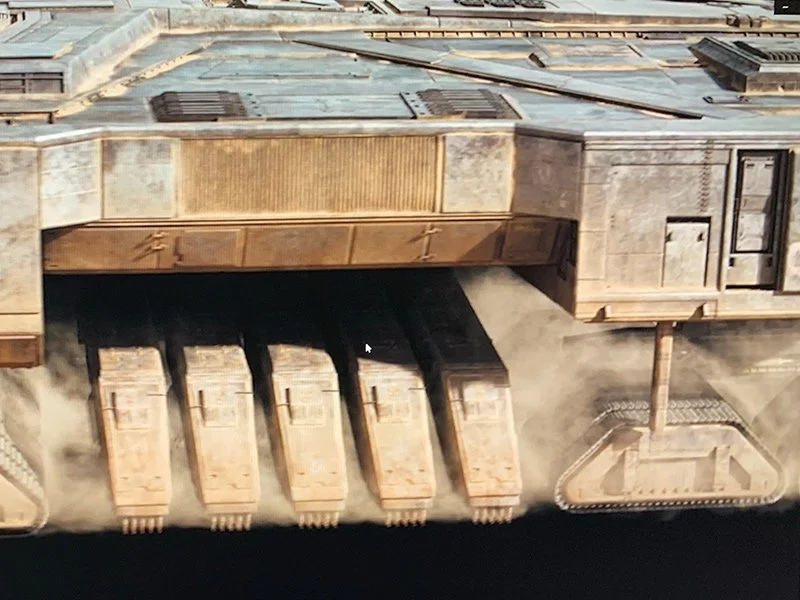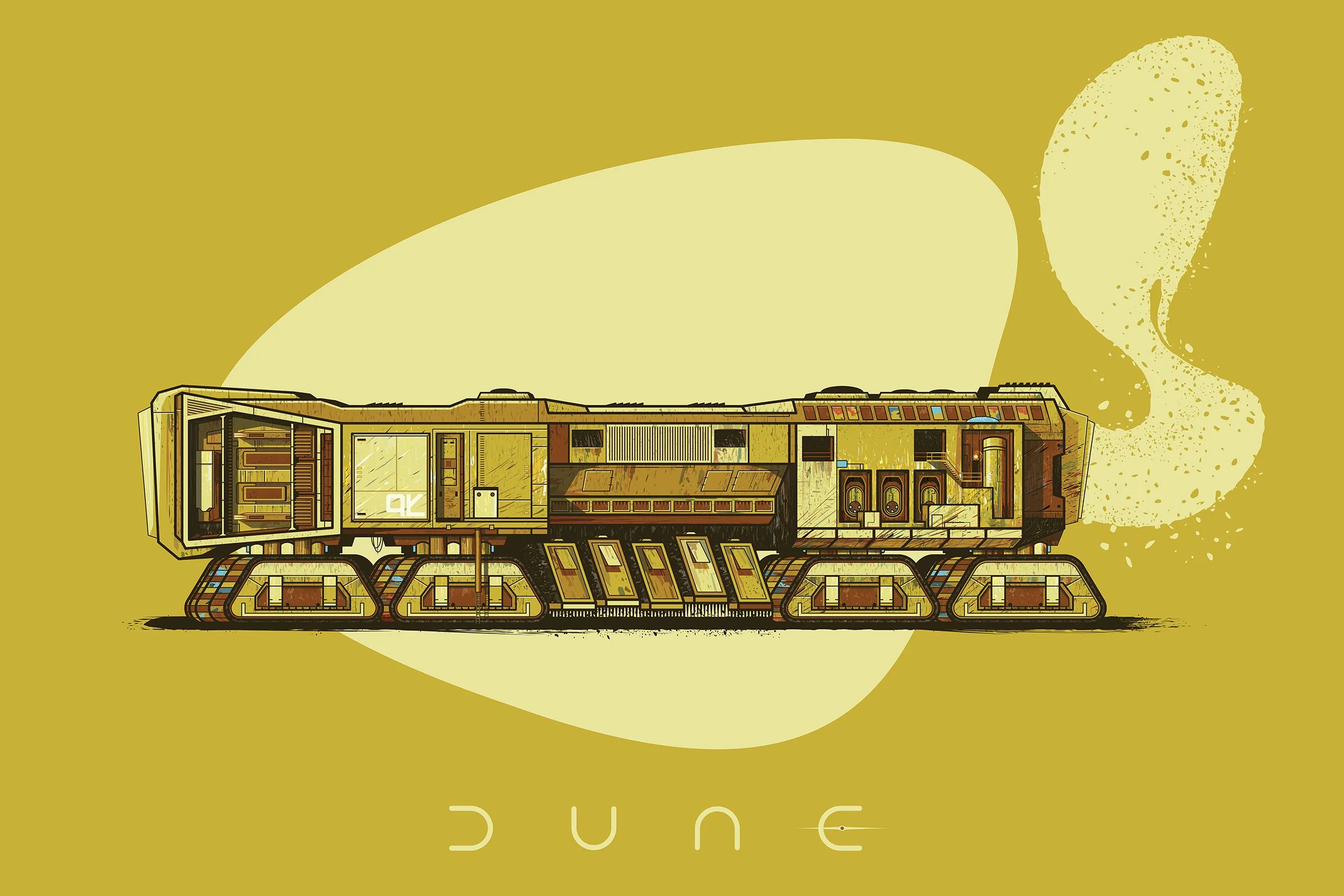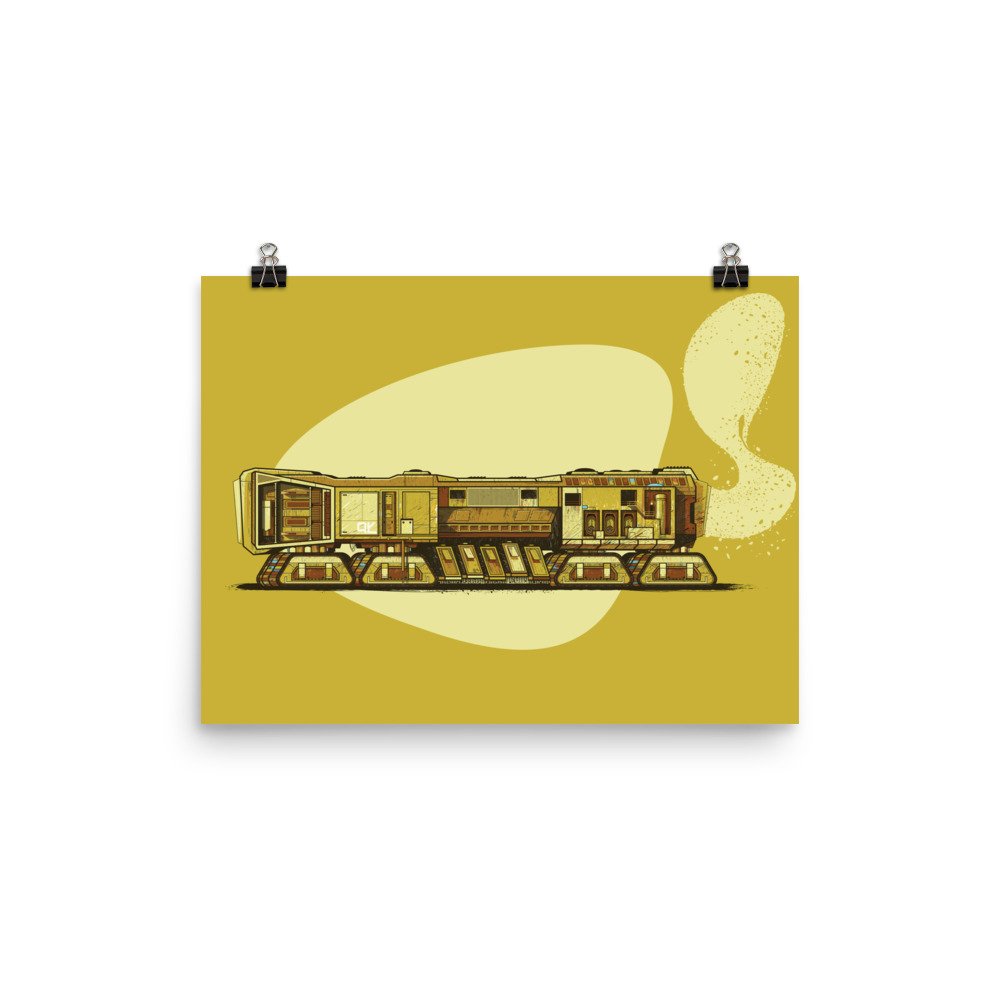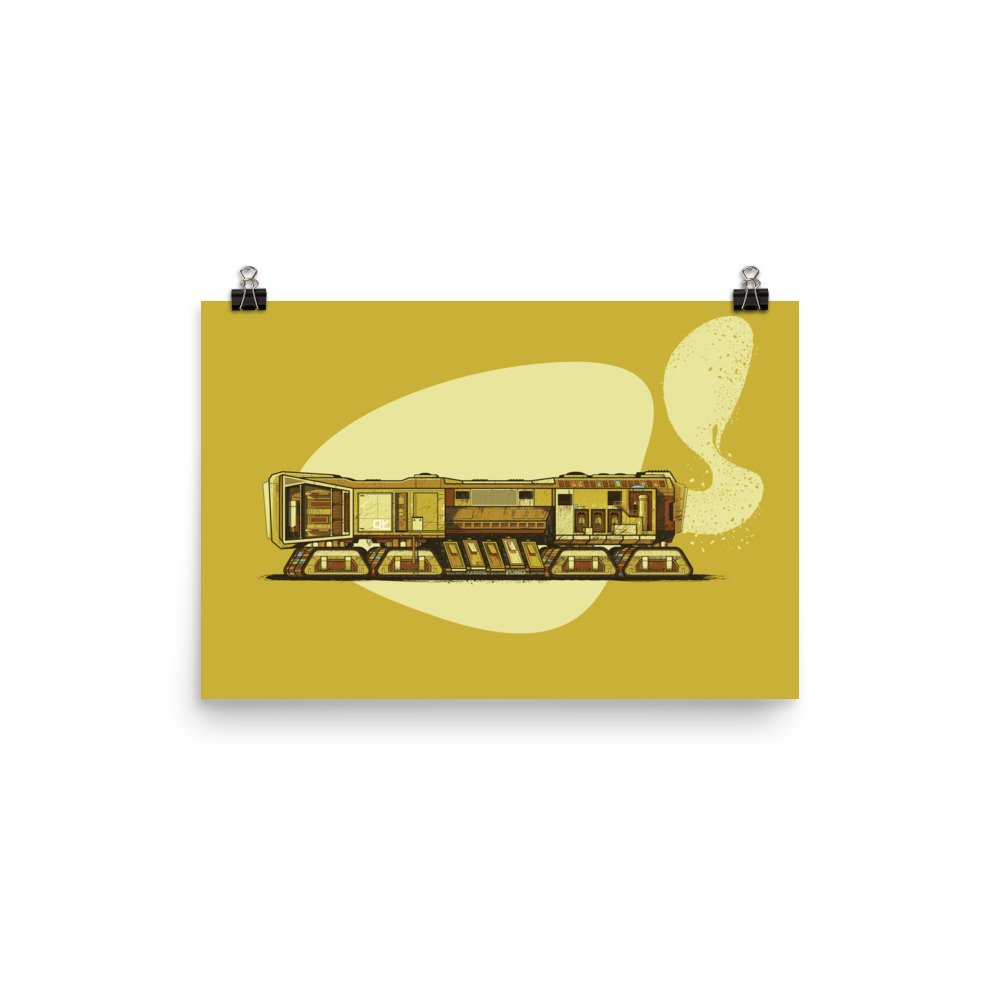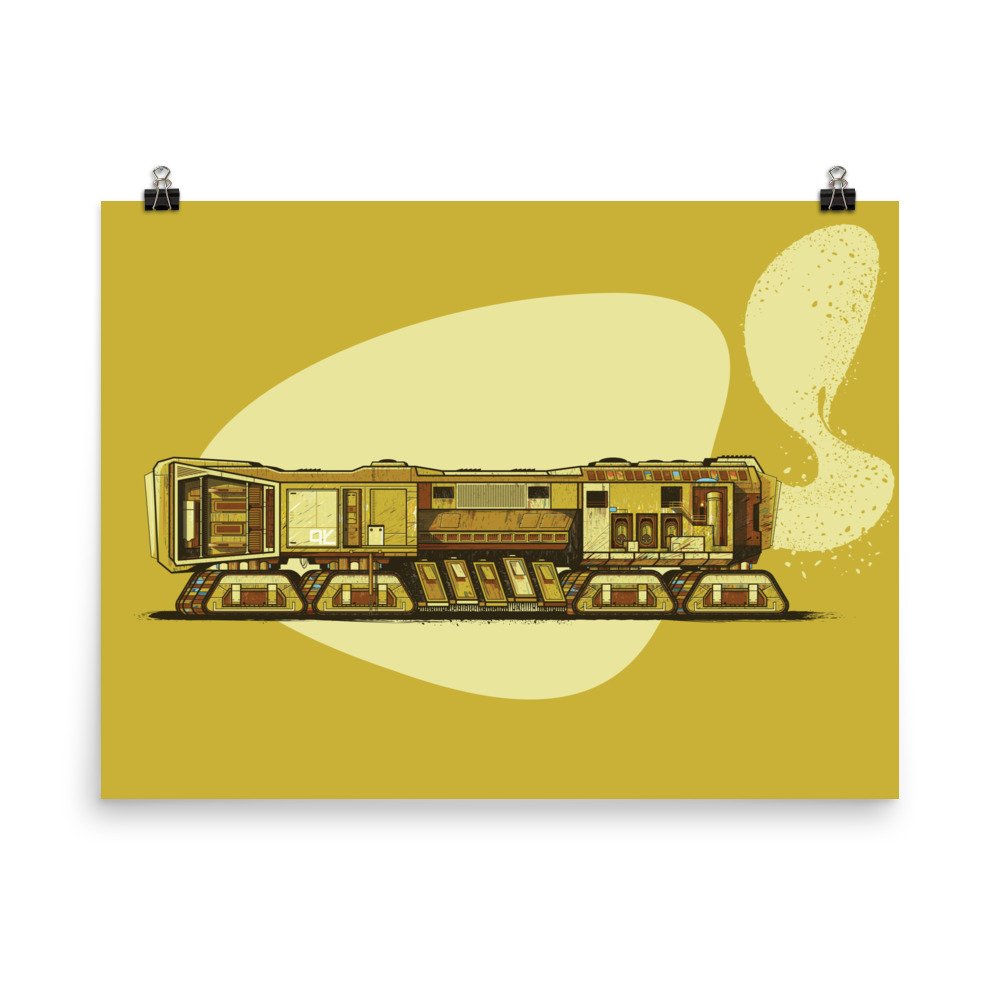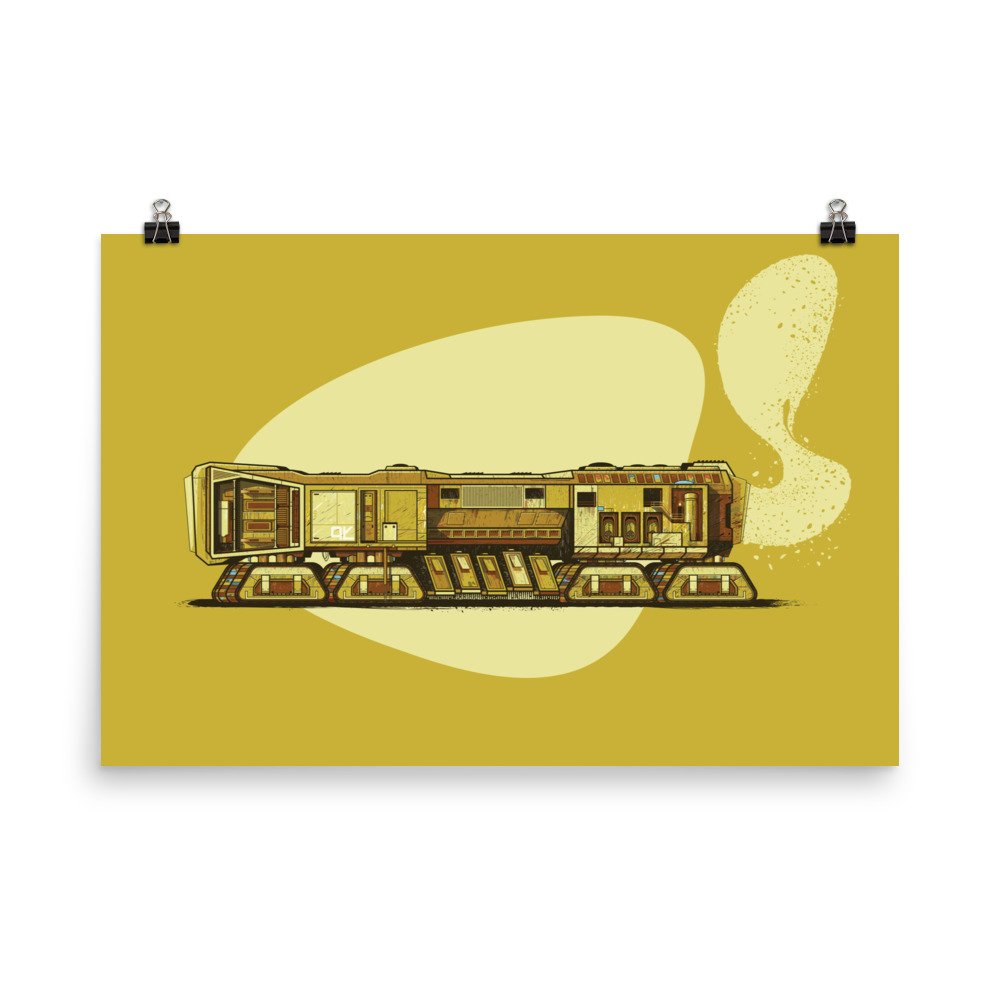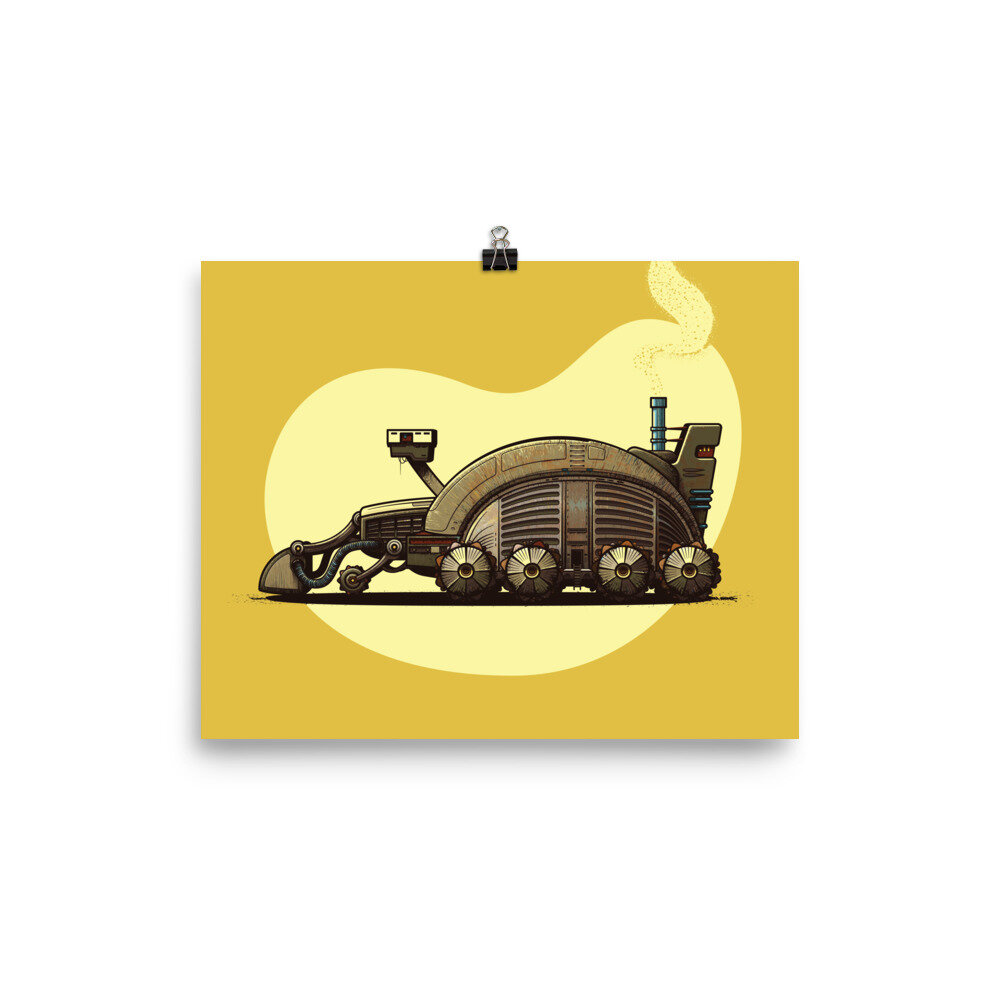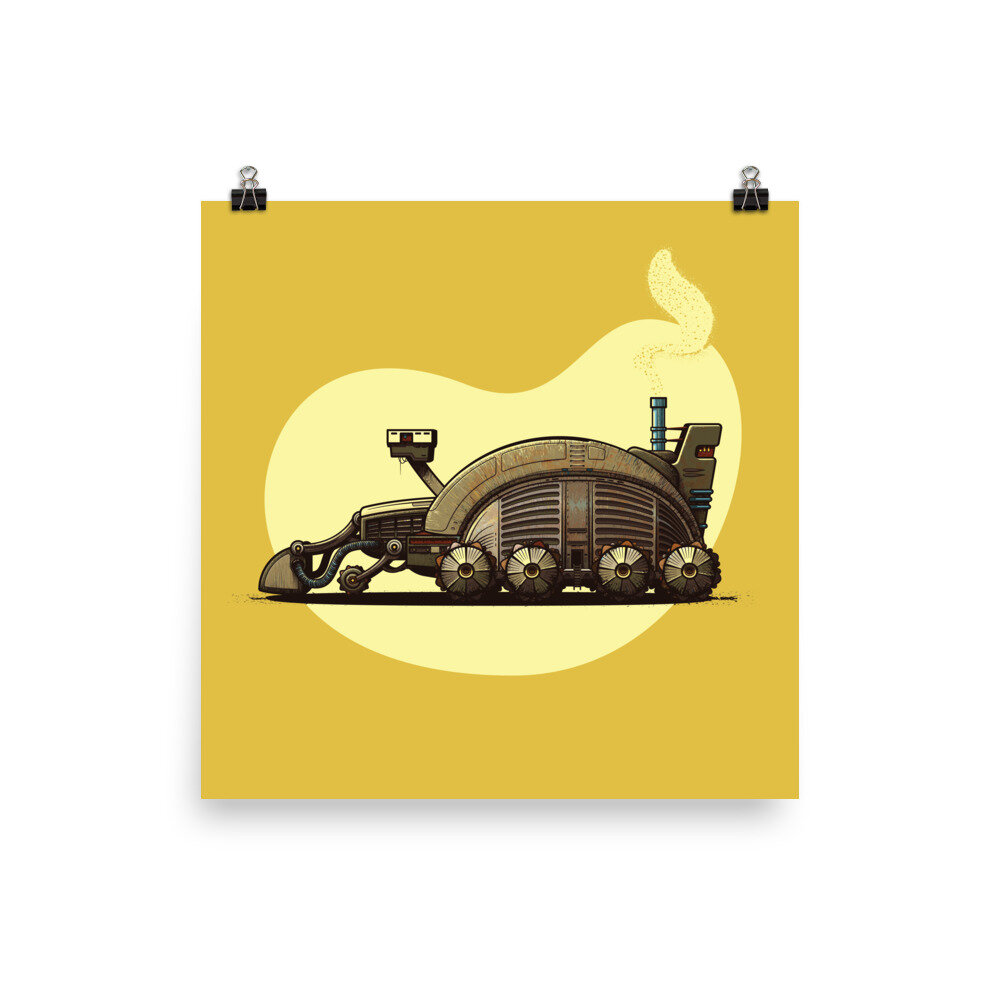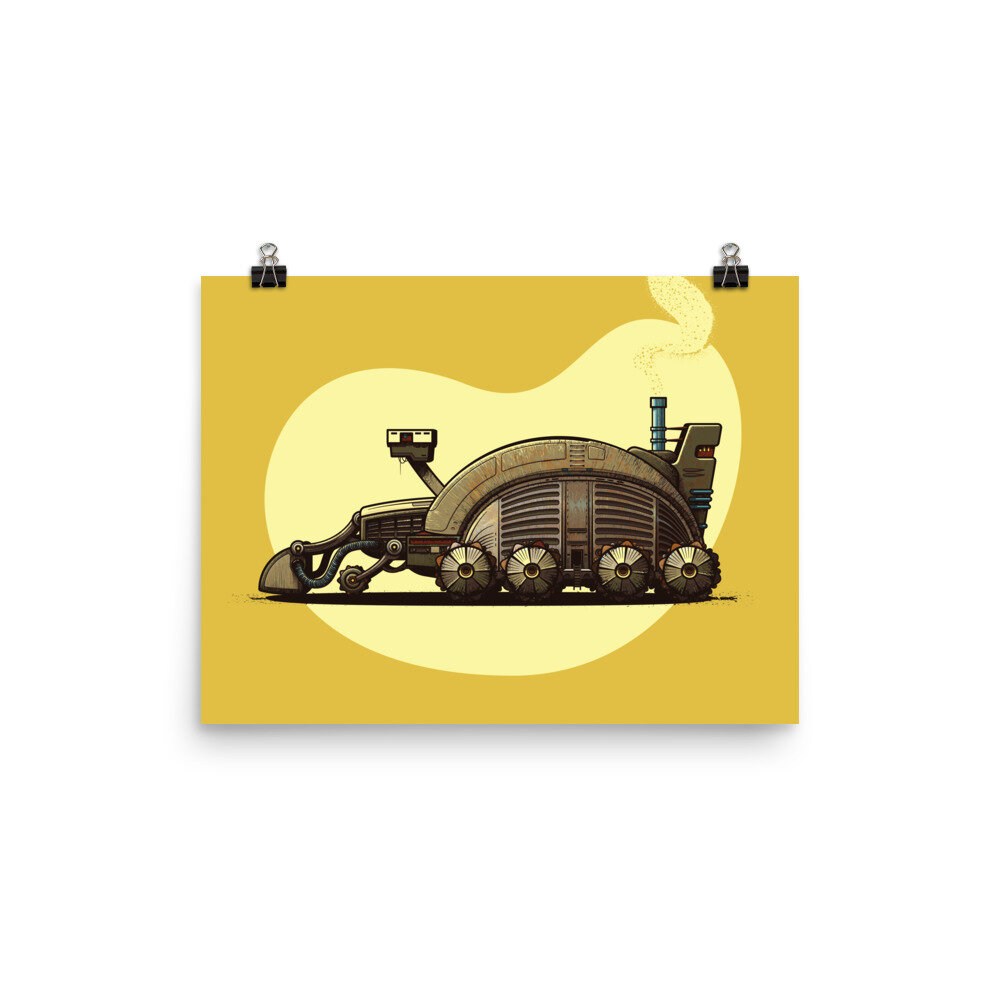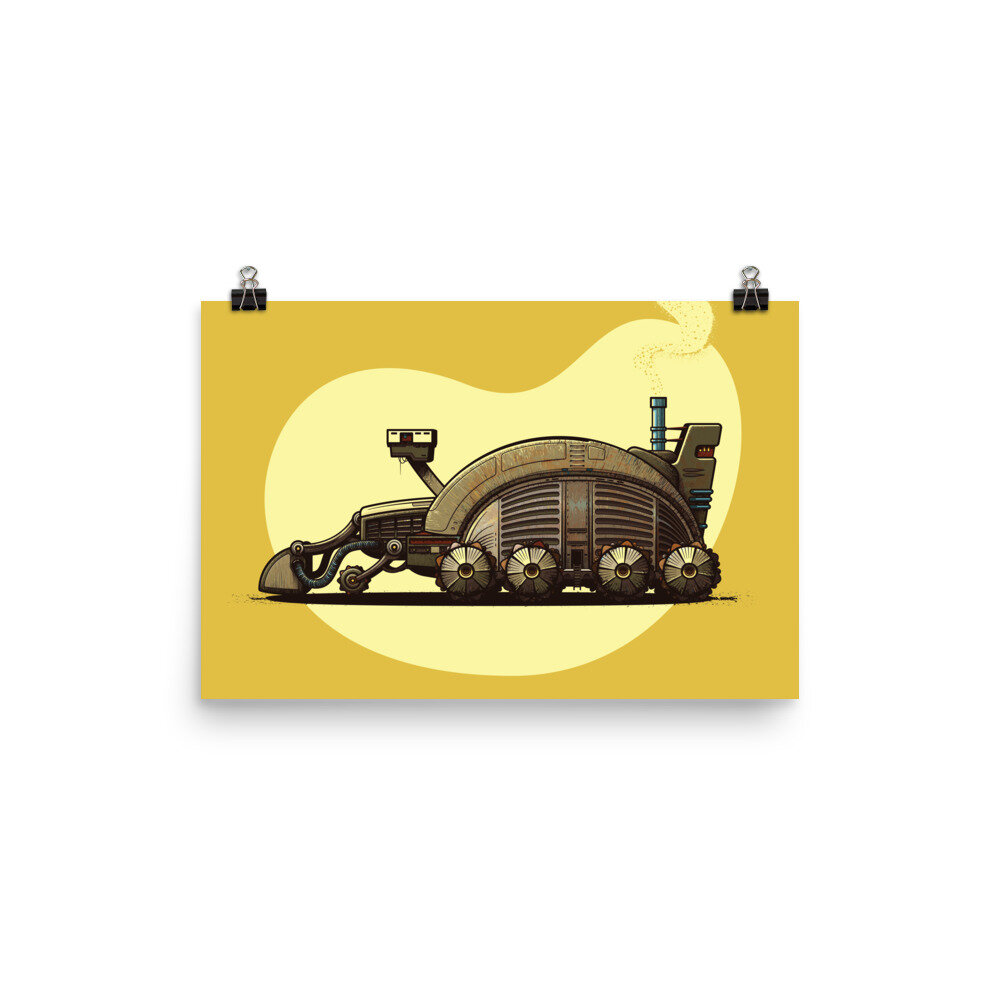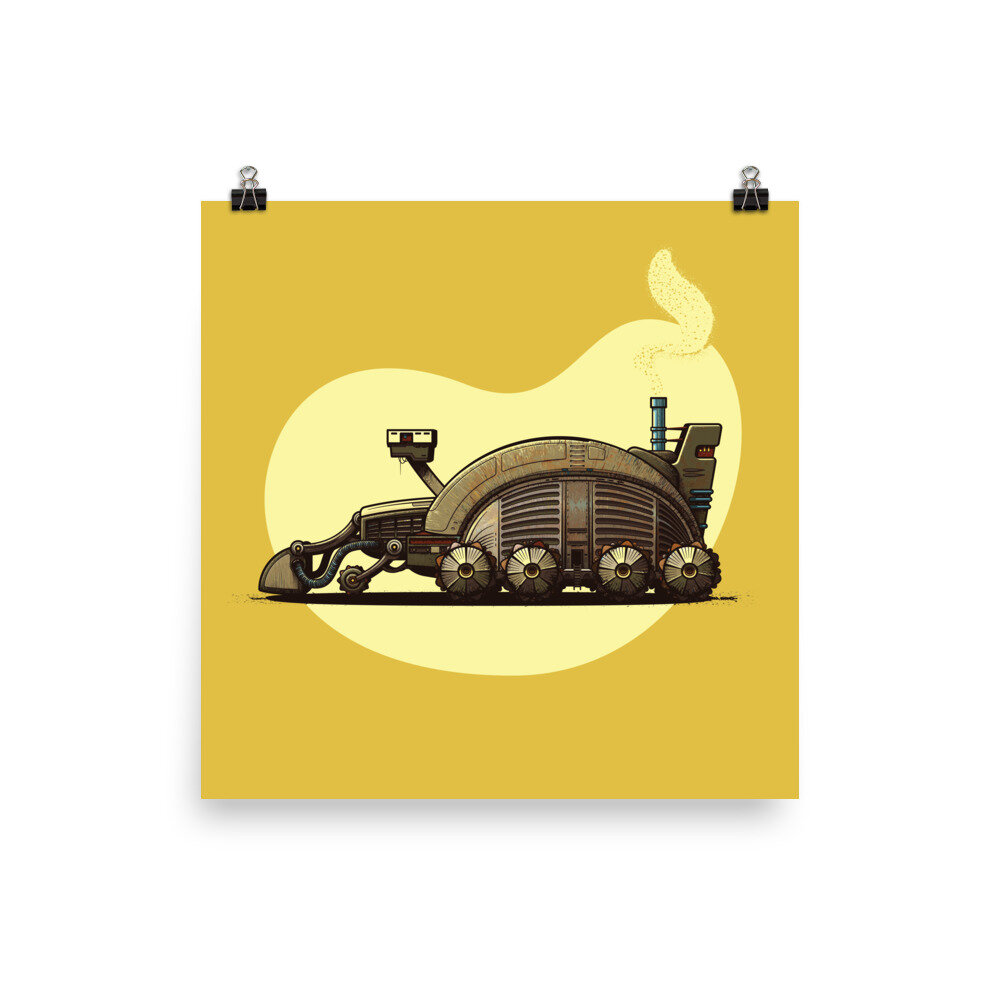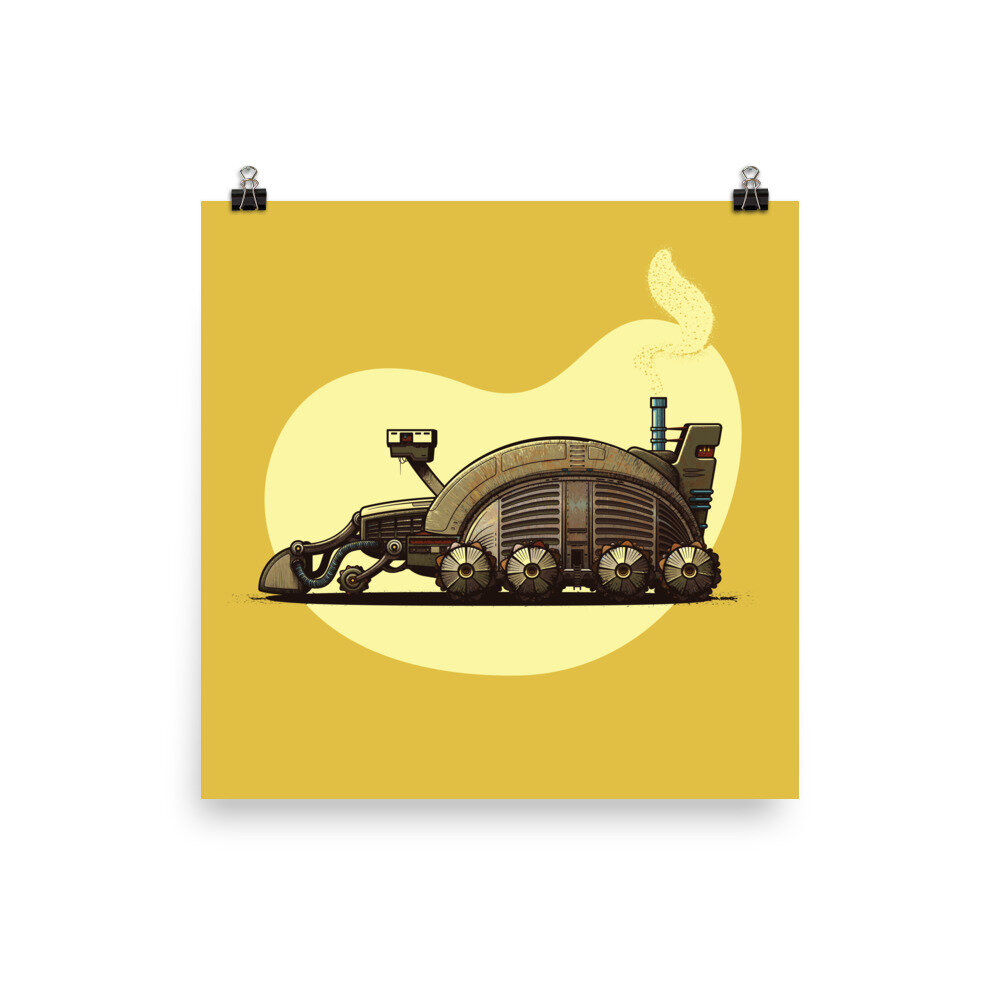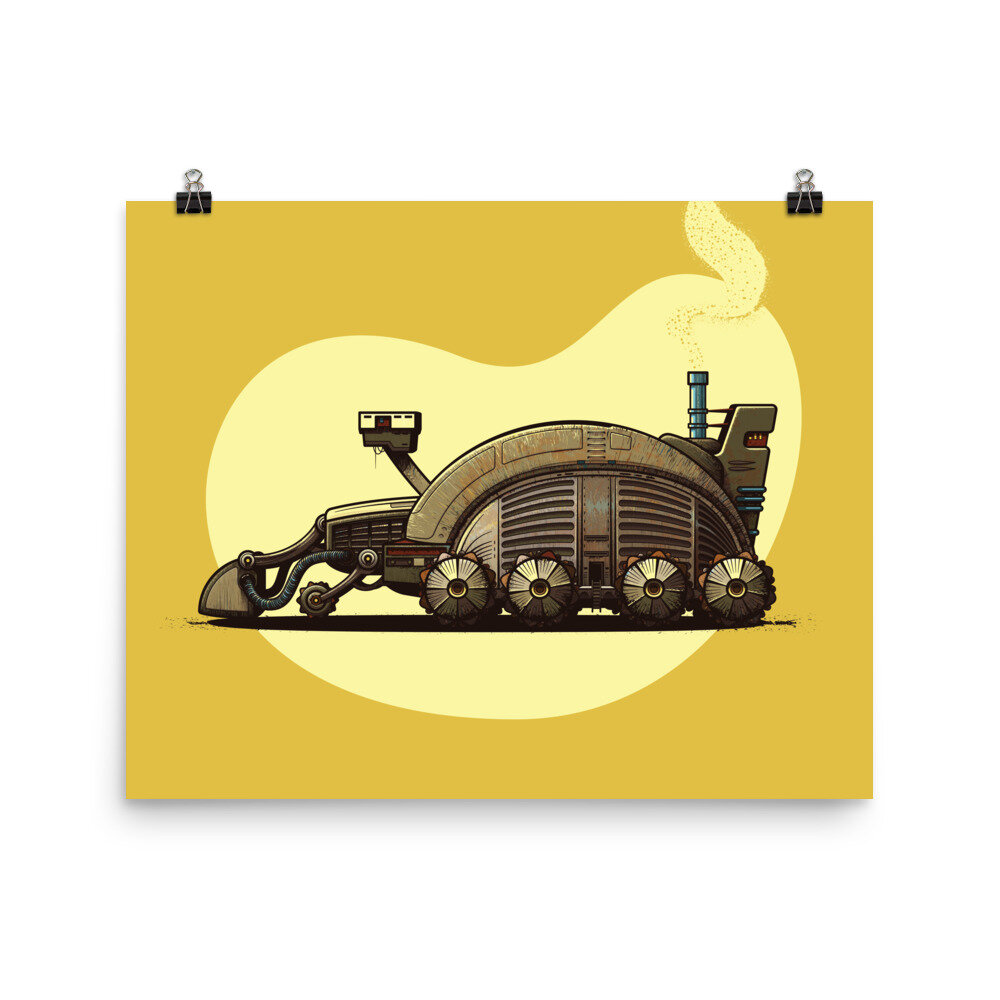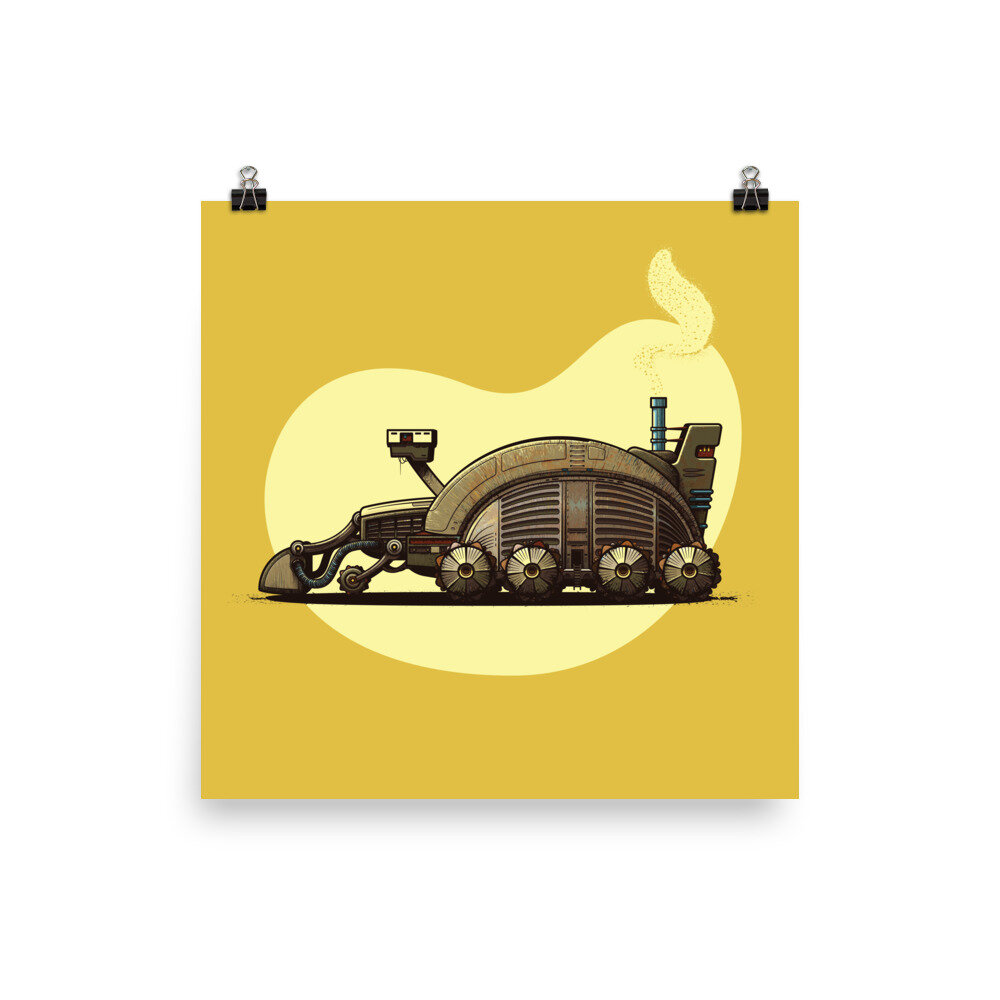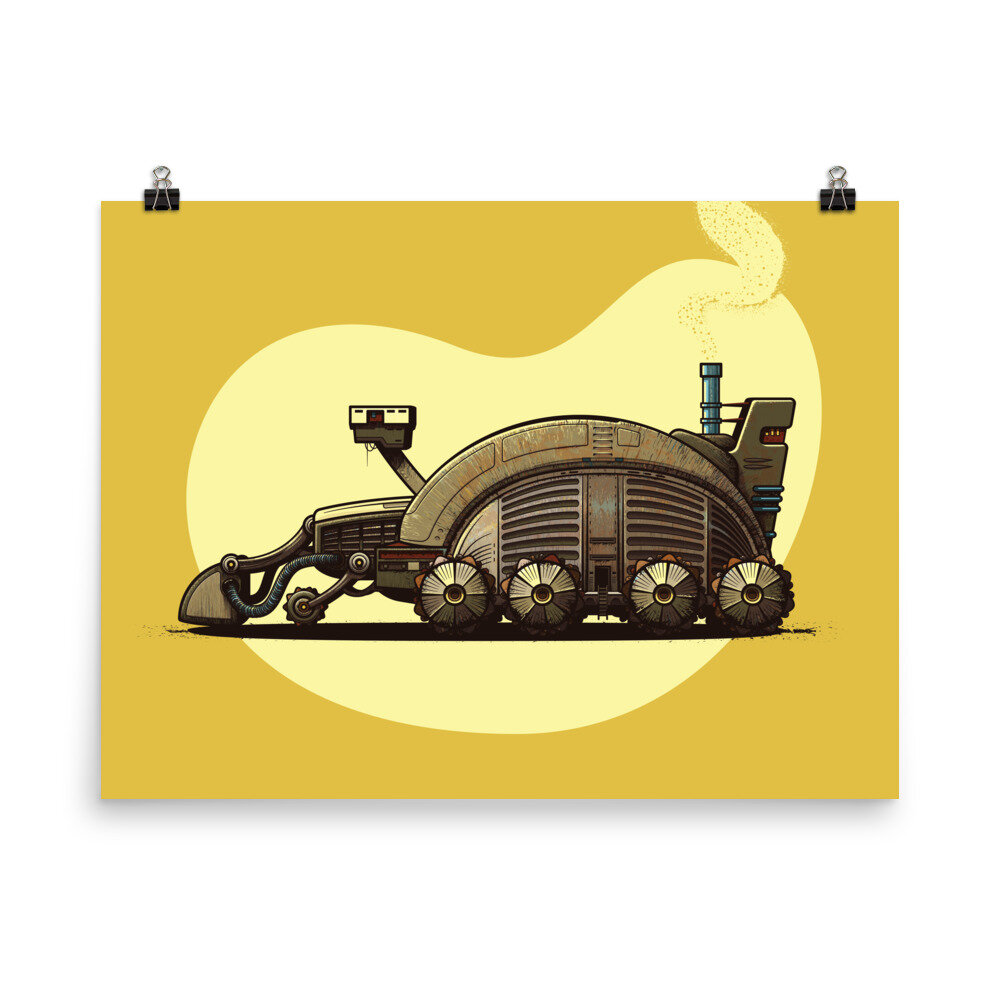Dune Spice Harvester
Overview
The real heroes of planet Arakkis are the spice harvesters who keep the spice flowing. I finally had some free time to vector the new spice harvester from Denis Villeneuve’s Dune. Because the movie is AMAZING and I always have plenty of free time 😉. Here is an overview of my illustration process. Enjoy!
Reference Materials
I almost always work from reference when illustrating vehicles and structures. However, I almost never directly trace the form because I prefer to solve the space relationships on my own through good ol’ observation. Here are the primary reference shots I used for this piece.
Line Art
Most of my work begins as simple line art. I stick with a few line weights and work out the general form, keeping in mind which shapes are major and minor elements. Here is the initial form before any color is applied. Notice how the front and rear of the spice harvester change over the course of the build; I found better reference materials from the movie’s special features and other behind-the-scenes shorts.
At this point I’m mostly using Illustrator’s grid and grid snapping capabilities to quickly create straight lines that intersect properly. It usually makes sense to start with one of the smallest elements to establish a minimum working scale, and build outward from that point. For this illustration I created the tracks/treads first and built upwards.
Color Blocking
The next step is to block in all the colors. I stick with a limited 5-color palette to get started — it’s more than sufficient to lay down highlights and shadows. Additional textures will be added in the next step. This phase is quite fast because I use Illustrator’s Live Paint tool to make short work of everything. Once it looks good (doesn’t need to be great; easy to adjust later), select the entire illustration and Object > Expand.
Texture Brushes
Things are now getting interesting. Using Pixelate > Mezzotint effects to stylize various gradients, several grain brushes were created and given a random selection of colors to complement the spice harvester. Learn more about creating this style of Illustrator texture brush. There’s no right or wrong way to do this, but it’s helpful to maintain a similar level of detail in each brush to prevent some areas from looking over or under detailed. A couple brushes make use of the Colorization > Tint setting so I can apply palette colors to monochrome brushes.
Putting it all Together
With brushes in hand and colors blocked in, the penultimate task is to apply the brushes and various blending modes to each panel of the spice harvester body. Nearly every brush is painted inside its corresponding shape via Illustrator’s Draw Inside mode — this is faster than making individual masks (and much cleaner.)
Lovely textures! Notice the front and rear got an overhaul to be closer to the source material. Here’s an outline view of the vectors in the finished piece.
Wrapping Up
The last little bits are nothing more than quick adjustments and fine tuning; apply a logo to the side, create grainy stylized smoke, add inset shadows to highlight the contours, and drop in a nice background/ground plane to complete the illustration. Et voilà! The spice must flow! Scroll for details and the finished piece.
For more Dune spice harvester illustration work, check out my harvester tutorial from Frank Herbert’s 1984 Dune.
I 🧡spice harvesters.


